Fermenting Beer with CellarScience Acid Yeast
Published: September 12, 2025 at 2:50:31 PM UTC
Last updated: November 27, 2025 at 1:50:17 PM UTC
CellarScience Acid Yeast revolutionizes homebrewing souring. This Lachancea thermotolerans dry yeast produces lactic acid and alcohol simultaneously. This eliminates the need for extended warm incubation and CO2 purges. For many brewers, this means simpler processes, less equipment, and quicker time from mash to fermenter.
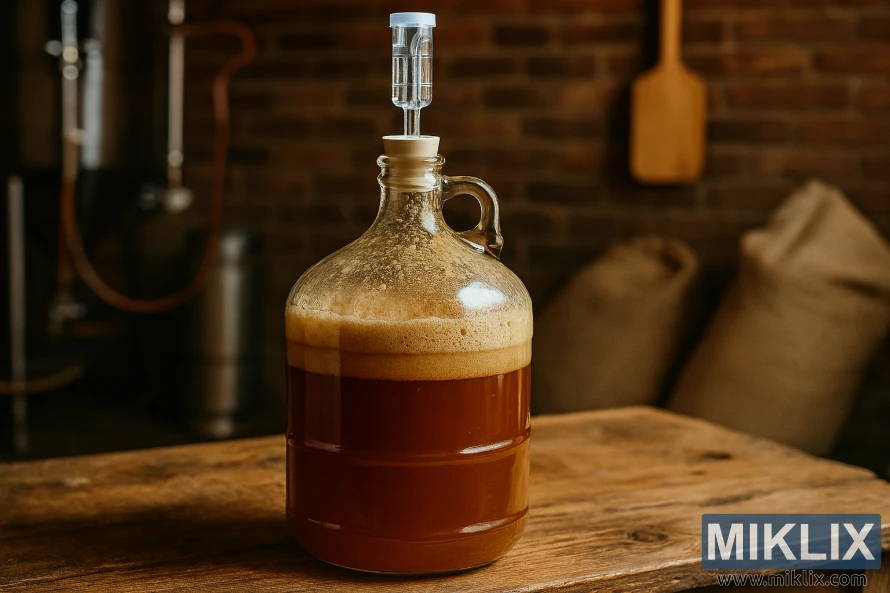
Designed for direct pitch, CellarScience Acid Yeast tolerates temperatures between 66–77°F (19–25°C). It exhibits high flocculation and commonly results in a final pH near 3.5 or lower. It introduces light fruity and floral esters while reliably lowering acidity. This yeast offers a low risk of cross-contamination from bacteria or Brettanomyces. Each batch undergoes PCR testing to ensure quality and consistency for homebrewing souring projects.
Key Takeaways
- CellarScience Acid Yeast (Lachancea thermotolerans) enables simultaneous lactic and alcoholic fermentation.
- Use it to simplify sour beer production and avoid kettle souring extra steps.
- Optimal fermentation range is 66–77°F; expect light fruity esters and rounded acidity.
- Dry, PCR-tested yeast offers low cross-contamination risk and easy direct pitching.
- Suitable for many homebrews up to about 9% ABV with 75–80% attenuation.
Overview of CellarScience Acid Yeast for Homebrewing
CellarScience Acid offers brewers a way to create sour beers without the need for bacteria handling. It's a Lachancea thermotolerans yeast that converts simple sugars into lactic acid and ethanol. This makes it a viable option for acidifying wort during primary fermentation, an alternative to traditional lactic acid bacteria.
It's ideal for styles like Berliner Weisse, Gose, and modern session sours. The yeast can be pitched directly into the wort or into the fermenter after chilling. Many brewers then follow up with a Saccharomyces ale yeast to finish fermentation and stabilize pH.
Its temperature flexibility makes it easy to use in homebrew setups. It ferments effectively between 11–25°C (52–77°F). CellarScience suggests fermenting between 19–25°C (66–77°F) for best acid production and flavor consistency. Monitoring pH during primary fermentation helps determine when to switch to a standard ale yeast.
The packaging is designed for homebrewers, with dry sachets and homebrew-size options available. Each batch undergoes PCR testing to confirm the strain's identity and quality. This testing ensures consistency and quality, unlike uncharacterized cultures.
The Lachancea thermotolerans yeast has several advantages over bacterial souring methods. It can handle high hop levels that inhibit many lactic bacteria, reducing contamination risk. The yeast cells do not propagate when normal brewing yeasts are present, making it a safer choice for homebrewing with shared equipment and sequential batches.
Benefits of Using CellarScience Acid Yeast in Sour Beer Production
CellarScience Acid Yeast streamlines sour beer production by eliminating the need for kettle souring. This innovation eliminates the necessity for lengthy warm incubations and CO2 purging. As a result, batches transition from mash to fermenter more swiftly.
It also simplifies equipment requirements. No specialized souring kettle or external heating systems are needed. This reduction in equipment needs saves space and money, making it ideal for homebrewers and small breweries.
Consistency is a hallmark of CellarScience Acid Yeast, thanks to PCR-tested lots. Brewers can rely on consistent attenuation and acid profiles. This consistency is invaluable for scaling recipes across different batches.
- Using a yeast-based culture reduces the risk of contamination compared to Lactobacillus or Pediococcus.
- This approach minimizes the risk of persistent bacterial buildup in kettles, drains, and fermenters.
Flavor control is straightforward with CellarScience Acid Yeast. It produces a balanced acidity with hints of light fruity and floral esters. This allows brewers to fine-tune the tartness while preserving a clean sour beer aroma.
Hopping options are also expanded. The yeast can handle more hop compounds than many bacteria. This means brewers can create hoppier worts or dry-hop without compromising on acidification.
The dry format offers shelf stability and easier shipping. It boasts high viability and strong cell counts, providing better value compared to many liquid starters. This makes it accessible to a wide range of brewers.
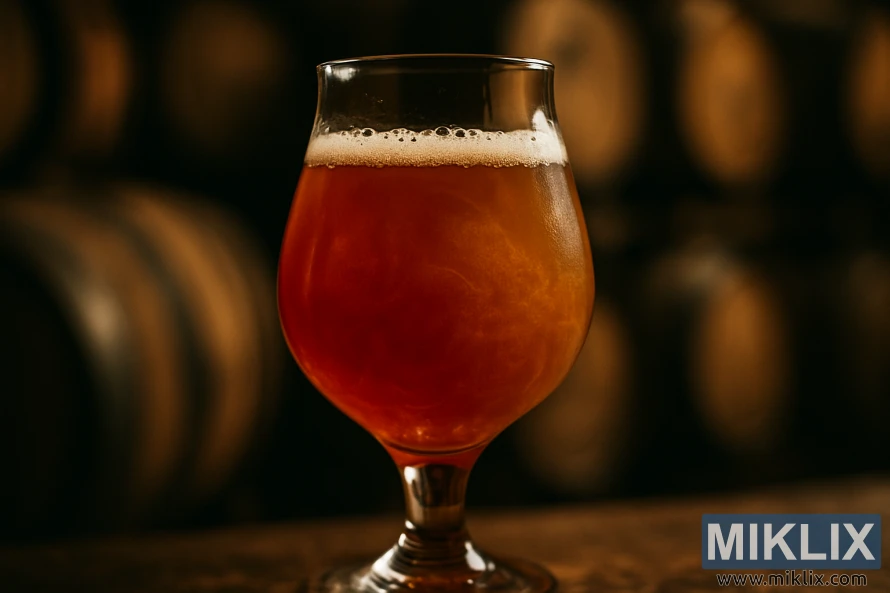
How CellarScience Acid Yeast Performs During Fermentation
CellarScience Acid yeast is a game-changer for brewers, as it performs both lactic and alcoholic fermentation. This capability eliminates the need for Lactobacillus, streamlining the process for sour and mixed-style beers. It simplifies the brewing process significantly.
Attenuation is reported to be around 75–80%, with alcohol tolerance up to 9% ABV. This level of attenuation is suitable for most recipes, ensuring a respectable gravity drop. For very high-gravity projects, a co-pitch or additional ale yeast may be necessary to achieve higher ABV levels.
Flocculation is high, leading to clear beers once fermentation is complete. This characteristic reduces haze and simplifies secondary transfers. It also limits extended souring in tanks and fermenters.
The acid profile tends towards a rounded tartness, often finishing at pH 3.5 or lower. Final pH is influenced by wort composition, mash acidity, fermentation temperature, and time. Monitoring pH is key to controlling the perceived sharpness of the beer.
To halt further acidification, brewers can pitch a conventional Saccharomyces ale strain after Acid reaches the desired pH. This approach ensures the ale yeast outcompetes Acid, finishing alcoholic fermentation while stabilizing acidity. It effectively separates souring from final attenuation.
CellarScience Acid being a yeast strain, not a bacterium, reduces long-term contamination risks in the brewery. Residual Acid cells do not persist like lactic bacteria in subsequent batches. While standard sanitation is essential, handling is simpler than with Lactobacillus cultures.
Practical considerations for brewers include monitoring gravity and pH daily during active fermentation. They must decide whether to co-ferment or sequence fermentations. Understanding Acid fermentation performance and Lachancea thermotolerans specifics helps align process choices with recipe goals.
Fermentation Temperature and Flavor Control
Temperature control is key in shaping the aroma and acidity of a batch. CellarScience suggests a range of 52–77°F (11–25°C) for optimal results. For most homebrewers, aiming for 66–77°F (19–25°C) is recommended.
Understanding the Lachancea thermotolerans temp profile is essential for selecting the right fermentation temperature. Fermenting at cooler temperatures, around 64–65°F (18°C), enhances citrus and cleaner lactic notes. On the other hand, warmer temperatures up to 77°F (25°C) bring out tropical and stone fruit esters.
Adjusting the temperature affects acid production. Higher temperatures increase metabolic rates, leading to faster acidification. It's wise to use a pH meter or reliable pH strips when fermenting at warmer temperatures.
Aligning temperature with flavor goals is critical. For a subtle, rounded acidity and cleaner profile, opt for lower temperatures. If you aim for pronounced fruitiness and quicker souring, choose higher temperatures and monitor pH frequently.
Here are practical steps to maintain control:
- Start fermentations at your chosen set point and avoid wide swings.
- Use a temperature-controlled chest, fridge, or proofing box for stability.
- Record temperature and pH daily during active fermentation for repeatable results.
By balancing flavor with fermentation temperature, brewers can create beers with predictable acidity and ester character. View the Lachancea thermotolerans temp profile as a starting point, not a limit. Adjust other variables like pitching rate and nutrient additions to refine your results.
Pitching Methods: Direct Pitch vs Rehydrate
CellarScience Acid presents two effective methods for yeast introduction into wort. You can either directly pitch CellarScience from the packet or rehydrate the dry yeast beforehand. Each technique has its own advantages and specific use cases.
Direct pitching is straightforward. The yeast, enriched with sterols and nutrients, excels in anaerobic conditions. Simply sprinkle the packet over the wort and let it settle. This method doesn't require initial oxygenation for most standard-strength batches.
Rehydrating dry yeast involves a brief, controlled process. Begin by sanitizing the packet and scissors. Mix about 10 g of sterilized water with 1 g of yeast at 85–95°F (29–35°C). Add 0.25 g of FermStart for each gram of yeast to the water. Sprinkle the yeast on top, wait 20 minutes, then gently swirl to suspend the cells.
Next, acclimate the rehydrated slurry to the wort temperature. Gradually add cooled wort until the slurry is within 10°F (6°C) of the main batch. Pitch once the temperatures are matched to avoid thermal shock and preserve cell viability.
Rehydration is advisable for high-gravity ferments or worts lacking nutrients. This method ensures better performance in challenging conditions. Using FermStart in the rehydration water supports yeast viability.
It's important to note the role of oxygen and early fermentation. Acid pitching instructions suggest that extra oxygen is not necessary for typical batches due to the yeast's anaerobic readiness. For heavy worts, consider supplemental nutrients or rehydration to enhance early fermentation activity.
- Direct pitch CellarScience — fastest, ideal for standard-strength worts.
- Rehydrate dry yeast — recommended for high-gravity or delicate ferments; use FermStart in the rehydration water.
- Follow Acid pitching instructions for best results and consistent fermentation starts.
Dosage Guidelines and Scaling for Different Batch Sizes
When using CellarScience strains in homebrew, follow simple Acid dosage rules. For a typical 5–6 gallon batch, the manufacturer suggests using two sachets. This method makes pitching easy and consistent for most homebrewers.
Scaling up beyond 6 gallons requires a weight-based approach. Use 2.5–4 grams of yeast per gallon of wort. This ensures cell count matches wort volume for consistent fermentation. For ease, round up to the next full sachet instead of weighing small amounts during brew day.
- 5–6 gallon homebrew: two sachets per manufacturer guidance.
- 10 gallons: calculate at 2.5–4 g/gal, then add an extra sachet if it simplifies pitching.
- Commercial or large batches: use the grams-per-gallon rule and round up to ensure viability.
Dry yeast from CellarScience shows strong viability and uniform cell counts. This reduces the need for large starters and ensures predictable performance across batches. Consistent sachet dosing preserves flavor outcomes.
For best results, consider brief rehydration for higher-pH worts or stressed conditions. Sachet dosing CellarScience usually performs well when pitched directly. Record your Acid dosage and outcomes to refine yeast scaling for future brews.
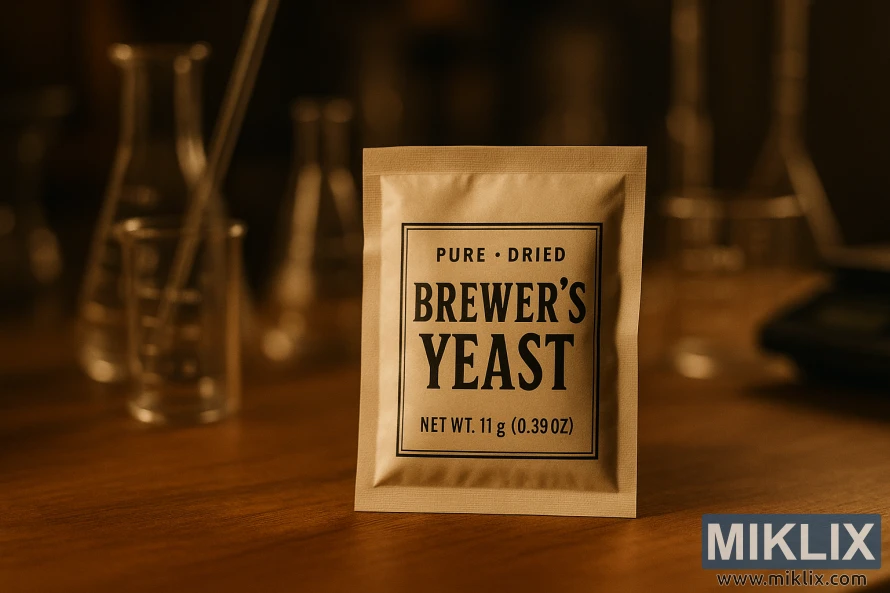
pH Management and Controlling Acidity During Fermentation
Start by measuring pH at the beginning of fermentation. Use a reliable meter or calibrated strips to track the pH as it drops. This gradual decrease gives you time to decide when to intervene.
Acid can lower the pH to around 3.5 or even lower. This depends on the wort's fermentability and the fermentation temperature. Warmer temperatures speed up acid production. Worts that ferment more easily tend to reach lower pH levels. Keep track of temperature and original gravity for consistent results.
To manage acidity in sour beers, set up regular checkpoints. Test pH at 12, 48, and 96 hours, then daily until you reach your target pH. This structured approach helps you control acidity without uncertainty.
If you aim to halt souring with ale yeast, pitch a clean ale strain when the pH aligns with your target. A conventional Saccharomyces strain will outcompete Acid for sugars. This stops further lactic acid production while completing attenuation and ester profiles.
Hops and wort composition also affect acidification. Acid can tolerate hop iso-alpha acids, which inhibit many lactic bacteria. This makes pH management with Acid yeast easier in hopped worts. Adjust hop levels and mash profile to achieve the desired sour character.
- Monitor frequently for predictable acidification.
- Adjust temperature to slow or speed pH decline.
- Pitch ale yeast to stop souring with ale yeast at the desired pH.
- Account for hops and wort fermentability when you plan acidity.
Keep a record of each batch's pH curve. This data allows you to refine your timing and achieve consistent results. Consistent recording is key to controlling acidity in sour beers across multiple brews.
Recipe Ideas and Style Guidance for Using the Yeast
Begin with a Berliner Weisse recipe, aiming for 3–4% ABV. Use pilsner malt and a light wheat bill. Mash at a lower temperature for a drier finish. Pitch the Acid yeast early, allowing it to drop pH before conditioning with fruit or botanicals.
Consider a Gose with Acid by adding a small salt and coriander charge late in the boil. The yeast tolerates modest salinity, making it suitable for kettle sour alternatives without long lactobacillus rests. Aim for tartness with restrained bitterness, allowing the spice and salt to shine.
- Session sours: target 4–5% ABV, bright citrus additions, minimal aging.
- Fruited sours: add fruit after primary for clarity and fresh aroma.
- Low- to mid-strength sour ales: keep fermentables balanced for easy drinking.
Acid shows resilience to hop antisepsis, allowing for dry-hopping or moderate IBUs during the boil. Use caution with very high bitterness if a soft, lactic profile is desired. Choose aromatic varieties like Citra, Mosaic, or Saaz for complimentary citrus and floral lift.
When using fruit and adjuncts, pair citrus and tropical fruit with light botanicals. Add fruit after primary fermentation to preserve fresh aroma and clarity. Consider puree or whole fruit additions depending on desired mouthfeel.
- Stage fermentations: allow Acid to reach target sourness, then pitch a neutral ale yeast to finish attenuation and round the body.
- Blending: combine younger and older batches to balance acidity and complexity.
- Gravity planning: design original gravity with expected attenuation of 75–80% and respect the yeast’s 9% ABV tolerance.
For higher-gravity sour styles, use staged fermentation or blends to avoid stressing the culture. Monitor pH and specific gravity to decide when to introduce a finishing yeast. This approach helps retain acid character while achieving desired alcohol and mouthfeel.
Use this guidance to explore kettle-sour alternatives, modern fruited sours, and classic styles. The yeast adapts to a range of recipes, allowing brewers to experiment with hop-forward sour beers and traditional staples like a Berliner Weisse recipe or a bright Gose with Acid.
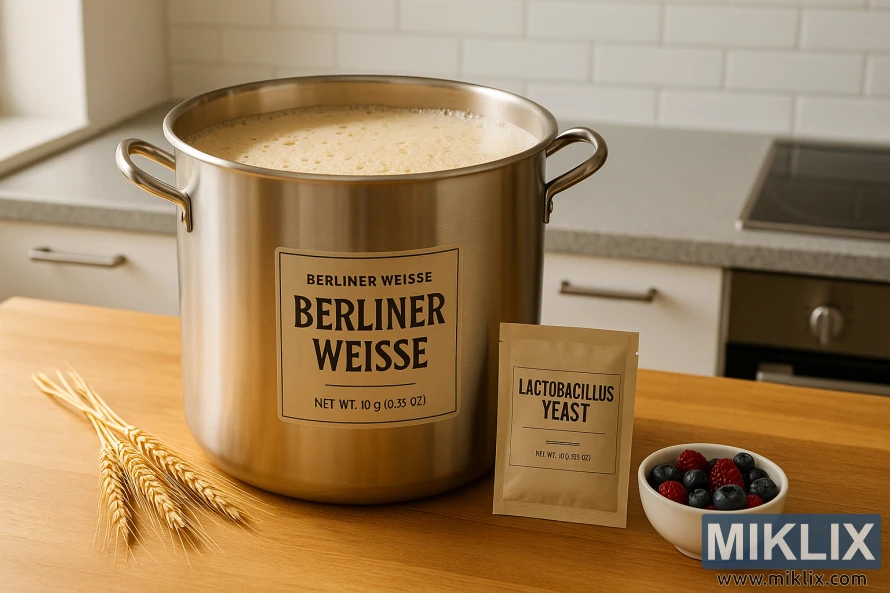
Managing Fermentation Nutrition and High-Gravity Batches
Begin by rehydrating dry acid yeast with FermStart to safeguard cell walls and enhance viability. Use 0.25 g of FermStart for every gram of yeast in the rehydration water. This step mitigates osmotic shock and establishes a solid base for acidity yeast nutrition in challenging worts.
When brewing high-gravity sour beers, plan your nutrient additions before pitching the yeast. High-sugar worts can stress yeast and slow down acid production if nutrients are insufficient. Introduce FermFed DAP-Free complex nutrient during early active fermentation. This supports metabolism without introducing harsh off-flavors.
Adjust yeast pitching rates according to gravity and batch size. Target 2.5–4 g of yeast per gallon for heavy worts. Always round up to the next sachet if uncertain. Higher pitch rates expedite acid production and reduce the risk of stuck fermentations in high gravity sour beers.
Implement staggered nutrient additions when necessary. Start with a small dose of FermFed at 24–48 hours, followed by another dose mid-ferment. This keeps yeast cells active as sugars diminish. Such a strategy maintains yeast health and steady acidity development, ensuring consistent acidity yeast nutrition.
If a high-gravity batch exhibits sluggish activity, reassess oxygen and nutrient levels before adding more yeast. Consider pitching a tolerant ale strain after the culture has produced sufficient acid to preserve the sour profile. This approach can complete attenuation while maintaining the desired acidity from the acid yeast.
Address issues with precise measurements. Monitor gravity and pH daily for the first week. Early gravity drops and steady pH movement indicate a healthy fermentation. Slow gravity changes with flat pH suggest nutrient or viability problems that FermStart and FermFed can rectify when applied correctly.
Organize a checklist for each high-gravity brew: proper rehydration with FermStart, adjusted pitching rate, timed FermFed additions, and monitoring of gravity and pH. Also, have a backup plan of pitching a tolerant ale strain if needed. This structured approach ensures reliable high gravity sour fermentation and predictable acidity yeast nutrition.
Equipment and Sanitation Advantages for Homebrewers
CellarScience Acid yeast simplifies the brewing process for sour beer enthusiasts. It's a non-bacterial yeast, eliminating the need for specialized kettle souring equipment. This allows homebrewers to create reliable sour profiles without dedicating specific kettles or fermenters.
This approach reduces initial costs and maximizes space. You no longer need to worry about long heat incubations, heavy insulation, or extended kettle hold times. Simply pitch the yeast directly into the fermenter and follow your usual sanitation routine.
Acid's biology also minimizes cross-contamination risks. It doesn't contain Lactobacillus, Pediococcus, or Brettanomyces, and residual cells are unlikely to grow in subsequent ales fermented with common Saccharomyces strains.
Manufacturers test each lot using PCR for strain purity. These test results provide brewers with confidence that no unintended microbes are introduced during brewing. This eliminates the need for separate sour-only vessels.
- Use standard cleaning agents and a consistent rinse cycle to maintain sanitation sour beer practices.
- Keep fermenters labeled and schedule sour and non-sour runs to further reduce cross-contamination.
- Rely on routine inspection and pH checks instead of elaborate kettle purging steps.
Acid offers a simple workflow, reduced equipment needs, and validated strain purity. These benefits make it appealing for homebrewers seeking sour beer without added complexity. It allows brewers to concentrate on recipe and flavor while keeping sanitation and equipment management straightforward.

Flavor Development and Sensory Expectations Over Time
Early fermentation with CellarScience Acid Yeast shows simultaneous lactic acid production and ester development Lachancea. Expect bright, fruity and floral esters while pH drops. These first days set the tone for a lively, drinkable beer.
Fermentation temperature steers aroma character. At about 64.4°F (18°C) you will notice citrus-like highlights. Pushing toward 77°F (25°C) amplifies tropical fruit notes. Keep records so you can reproduce desired results.
During conditioning the sharp edges soften. Sour beer aging lets acidity integrate with malt and yeast-derived esters. Over weeks to months the acidity rounds and becomes less pointed than many bacteria-driven sours.
Final tasting typically reveals a balanced acidity and restrained phenolic or acetic presence when the product is handled properly. Target final pH often lands near 3.5 or lower depending on mash, water, and time.
- Primary phase: tartness and ester development Lachancea peak.
- Conditioning: sour beer aging melds acid with malt body.
- Finishing: fruit or secondary yeast can shift aroma and mouthfeel.
Using a finishing ale yeast, adding fruit after primary, or employing barrel or controlled oxidative aging will change the sensory path. Acid flavor profile acts as a predictable sour base for these techniques.
Track aroma and pH at set intervals. Small, frequent tastings help you judge when the beer has reached the balance you want. This practical monitoring keeps flavor development aligned with your sensory goals.
Comparing CellarScience Acid Yeast to Traditional Souring Methods
The decision between Acid and kettle souring hinges on process, risk, and flavor aspirations. Kettle souring employs Lactobacillus in a warm, sealed mash tun or kettle for a dedicated souring phase. This phase necessitates meticulous CO2 purging and stringent sanitation to avert contamination. Acid, on the other hand, obviates the need for a separate lactic step, souring directly in the primary fermenter. This approach streamlines the process, reducing both time and equipment requirements.
For those aiming for traditional complexity, mixed culture and spontaneous methods stand unparalleled. These methods, rooted in historic Lambic and Flanders traditions, combine native Lactobacillus, Pediococcus, Saccharomyces, and Brettanomyces for extended aging. This blend crafts a nuanced acidity and funk that Acid alone cannot replicate. The distinction lies in the contrast between Acid's bright, controlled acidity and the evolving, rustic complexity of mixed cultures.
- Contamination risk: bacterial souring poses significant cross-contamination risks, often necessitating dedicated kettles or fermenters. Acid's yeast-based method minimizes this risk and simplifies sanitation protocols.
- Flavor profile: Acid imparts fruity and floral notes, delivering predictable ester-driven sourness with minimal phenolic or acetic presence. In contrast, mixed cultures or Brett fermentations offer deeper funk, complex tannin interactions, and evolving acidity over time.
- Time and equipment: kettle souring introduces a warm incubation and handling steps. Acid integrates souring into a single primary fermentation, reducing handling and equipment needs.
The choice between Lachancea and Lactobacillus impacts aroma and control. Lachancea thermotolerans, used in Acid strains, produces lactic acid while fermenting sugars and contributes estery fruit notes. Lactobacillus, by contrast, delivers pure lactic sourness, often requiring a lab-like approach to manage hops and Brett interactions.
Guidance on use cases aids in aligning method with intent. Select Acid for consistent, hop-friendly sours that align with a tight schedule and shared equipment. Opt for kettle souring when seeking a straightforward lactic backbone while preserving hop character. Mixed culture or spontaneous fermentation is best for historical authenticity and multi-layered funk, requiring extended cellar time.
This comparison should inform practical decisions in the brewing realm. Consider sanitation protocols, aging patience, and the desired flavor profile before committing to a method. Each approach has its advocates and distinct trade-offs in complexity, risk, and outcome.
Conclusion
CellarScience Acid (Lachancea thermotolerans) provides a straightforward, PCR-tested method for creating tart, rounded sour beers. This yeast combines lactic and alcoholic fermentation in a single dry product. This approach saves time and minimizes contamination risks compared to kettle souring or mixed-culture methods.
For homebrewers aiming for consistency, the CellarScience Acid Yeast review highlights its ability to control pH and produce fruity, floral esters. These characteristics are ideal for sessionable sour ales up to about 9% ABV. This yeast is perfect for those who wish to avoid the complexity of multi-step souring, preserve hop character, or achieve precise acidity levels.
It pairs well with finishing ale strains, fruit additions, and standard conditioning. Using FermStart or FermFed nutrients can enhance its performance, even in high-gravity or nutrient-poor worts. If you decide to buy Acid yeast, monitoring temperature and pH is essential to shape the final aroma and tartness.
While Acid is not a substitute for complex mixed-culture or barrel-aged souring for deep funk or long-term development, it stands out for streamlined, controlled sour production. For homebrewers seeking a balance of convenience, flavor control, and low contamination risk, CellarScience Acid is a valuable addition to your brewing arsenal.
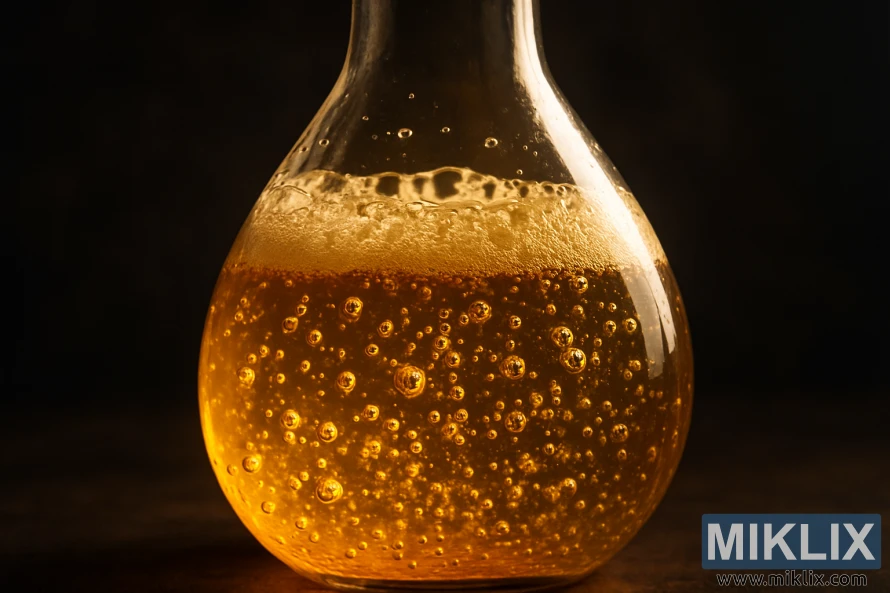
Further Reading
If you enjoyed this post, you may also like these suggestions:
- Fermenting Beer with Fermentis SafLager S-189 Yeast
- Fermenting Beer with White Labs WLP095 Burlington Ale Yeast
- Yeast in Homebrewed Beer: Introduction for Beginners
